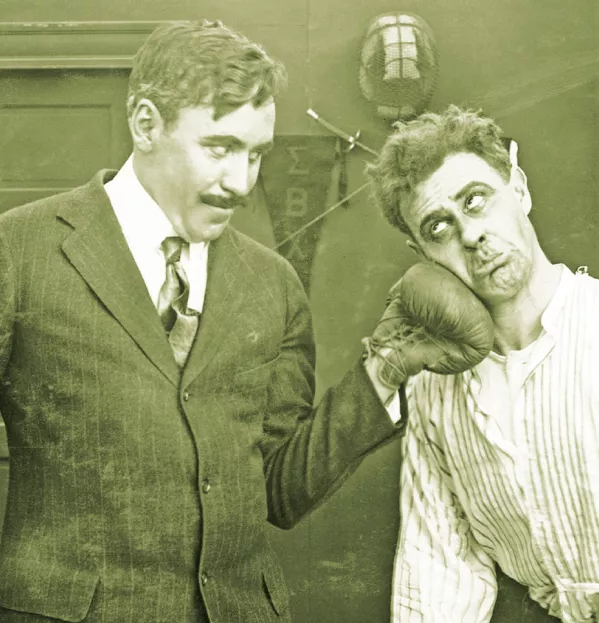How colleges and students’ unions can get along

I’ve been a lecturer in the FE sector for more years than seems plausible, given my track record of irreverence and lack of organisational skills. But I’ve only stepped inside the students’ union office at my college a handful of times. One of these occasions was to procure a student card, enabling me to access the many delicious shopping discounts that came with enrolling on a ballroom-dancing class (but that’s a tale for another day).
Even if my own contact has been minimal, I’ve always found the relationship between union and college to be fascinating: seemingly symbiotic, yet often antagonistic. It strikes me that it must be fraught with tension.
Open war vs happy partnership
With student voice an ever-present mantra in FE, how is the relationship between this and the larger organisation negotiated (especially when the two might not see eye to eye)? Is it as fractious as I imagine it to be? Is it open warfare in the meeting rooms between the suits and the students’ union, with lines being drawn and no one budging on the issues of the day? Or is it more of a happy partnership, where the union and the college skip hand in hand into a magical world of improvement?
“I see our role as critical friends,” says Emily Chapman, union president and elected student governor at Leeds City College. It’s a sentence that resolutely reaches for the middle ground between battling and hugging. In all honesty, I’m a little disappointed by such a measured response, so I ask her to elaborate.
“It’s important because the students’ union is here to represent the students, to make sure their education is outstanding, to make change and make sure they have great experiences outside the classroom,” she explains. “If we don’t have that friendship [between union and college] to relay student voice, there would just be conflict, constantly.”
There has to be a respect for what each other does: an acknowledgement of the good work that the union does and, of course, what the college is also doing
Is such an amicable relationship desirable, though, when looking out for the best interests of the student body? How then do you still hold the college - upon which the union relies for block funding - to account?
“Unfortunately, there are staff who get very defensive of their area, due to protectiveness or just lack of knowledge of what we are here to try and achieve,” Chapman says. “And it’s sometimes not a very restorative process when there are problems.
“There are also staff who think that the students’ union and student voice are just tick-boxes for performance review and don’t engage fully. I very much like to talk to people, arrange a meeting and say, ‘Look, come on, can we help each other out here? There’s no need for this brick wall to be here. We can work together to sort this out.’
“If that doesn’t work, in certain cases, we’re able to mobilise student voice with things like direct petitions and student conferences to really make it clear that it’s not me that is unhappy, it’s the students - the people that we, as sabbatical officers, are all supposed to be working for.”
It’s not all plain sailing, then. I ask how Chapman thinks other members of the college staff view her and her team, and I’m politely corrected. “It’s a common misconception, but sabbatical officers aren’t staff members,” she says. “We’re students. We’re seen in meetings and things like that, and it’s easy to make that mistake.”
Foot in both camps
This is the crucial point: having a foot in both camps, students’ unions do the difficult balancing act of being insiders while also supporting those who may feel they are outside.
But although the Leeds City College Students’ Union tries to set itself apart, like many other unions in FE institutions up and down the country, it has also been hit by the budget cuts that the sector has endured. Chapman has had to cut the number of sabbatical roles by half, cancel and redesign the process to put on a wide range of student-led ventures, and seek advice regarding finance. In this aspect, the union very much serves as a microcosm of FE in general.
So what would the perfect partnership between college and students’ union look like?
“There has to be a respect for what each other does: an acknowledgement of the good work that the union does and, of course, what the college is also doing,” Chapman says. “The job can be so hard and there are sometimes not enough hours in the day, so to show an appreciation of each other is very important.”
Tom Starkey teaches English at a college in the North of England. He tweets @tstarkey1212
You need a Tes subscription to read this article
Subscribe now to read this article and get other subscriber-only content:
- Unlimited access to all Tes magazine content
- Exclusive subscriber-only stories
- Award-winning email newsletters
Already a subscriber? Log in
You need a subscription to read this article
Subscribe now to read this article and get other subscriber-only content, including:
- Unlimited access to all Tes magazine content
- Exclusive subscriber-only stories
- Award-winning email newsletters